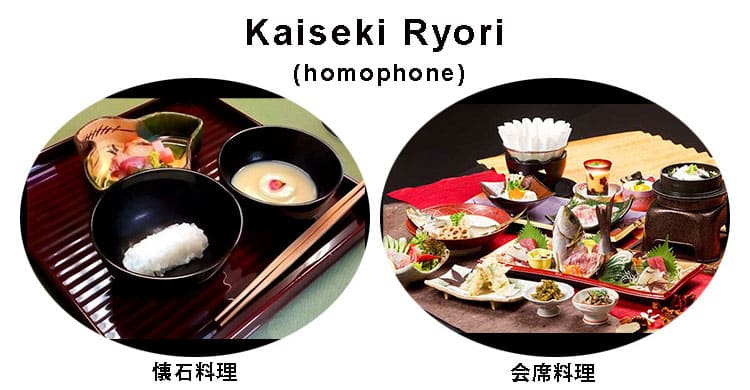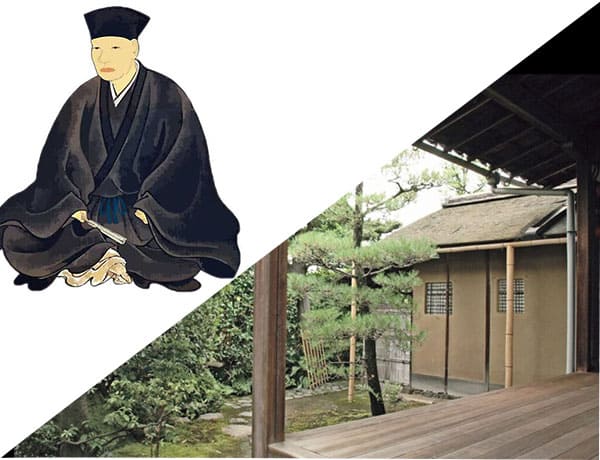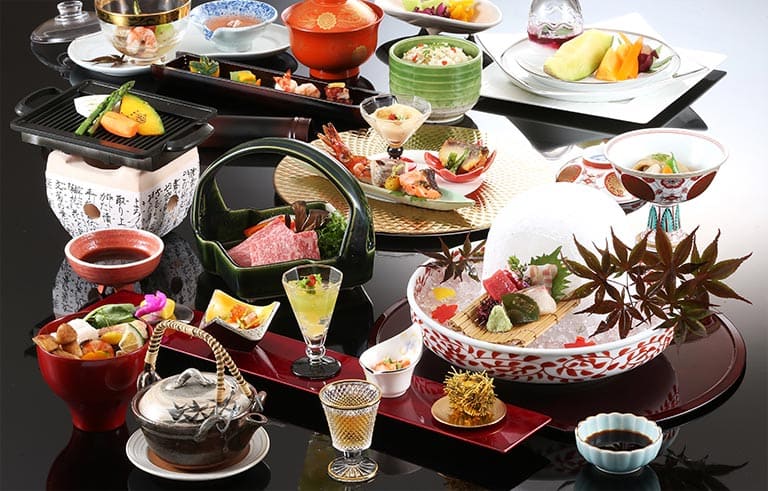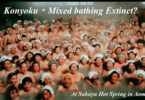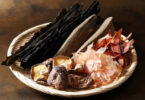Hello everyone how are you? Today’s topic is “Kaiseki Ryori” (cuisine), No.2 Kaiseki(懐石) Ryori, No.3 Kaiseki (会席) Ryori which are of four kinds of Washoku (Japanese cuisine) that are said to be “Healthy Cool Japan Food”.
Although No.2 Kaiseki and No.3 Kaiseki, they are the same pronunciation, its meaning is quite different. In English, we say it “homophone”.
But nowadays, to avoid the mistake of the same pronunciation, kaiseki Ryori (cuisine)is also called Tea-Kaiseki Ryori (cuisine).
What’s difference between No.2 Kaiseki(懐石) ryori and No.3 Kaiseki(会席) ryori?
In a word, ”Kaiseki ryori or tea-kaiseki ryori” is for enjoying tea while “kaiseki ryori” is for enjoying sake.
Therefore, tea-kaiseki-ryori has the spirit of tea ceremony “Treasure every meeting for it will never recur”. It regards hospitality, rationalized manners, seasonality and colorfulness as important.
Tea-Kaiseki Ryori and Kaiseki Ryori are both representative dishes of Japan’s traditional washoku (Japanese cuisine) culture, but in fact, they have differences in history, purpose, and culinary content.
Let’s unravel the two arts of Japanese cuisine, which differ in appearance and taste.
What’s “Tea-Kaiseki ryori”?
Kaiseki cuisine refers to simple dishes served before drinking thick tea at a tea gathering. It expresses the spirit of tea ceremony brought by Sen no Rikyū (1522~1591), master of tea ceremony, tradespeople.
He’s embodied the principles of ‘wabi-sabi’ in cooking, which include ‘using seasonal ingredients,’ ‘bringing out the natural flavors of ingredients,’ and ‘serving with hospitality.’
The menu of tea-kaiseki cuisine is based on ‘one soup, three dishes,’ where rice and soup are served at the beginning of the meal.
Kaiseki cuisine was named after monks who, feeling hungry during their once-a-day meal, would warm stones in their robes to alleviate hunger.
It signifies a light meal eaten before drinking tea and is said to have been introduced to the tea gathering/ceremony by Sen no Rikyū.
History and Purpose
Tea-Kaiseki Ryori: Developed based on the spirit of the tea ceremony, this cuisine was created for the host to entertain guests during tea gatherings.
It focuses on simple enjoyment of seasonal ingredients along with tea in a limited space called the tea room.
Kaiseki Ryori: Developed in the samurai society during the Edo period, this cuisine is served at banquets.
Multiple dishes are served to enjoy with alcohol, characterized by their elaborate appearance and variety of dishes.
Culinary Content
Tea-Kaiseki Ryori: Based on the concept of “one soup, three dishes,” it includes rice, soup, appetizers, simmered dishes, and side dishes.
It features lightly seasoned dishes that bring out the natural flavors of the ingredients, with a presentation full of seasonal touches.
On the other hand, Kaiseki Ryori: Based on Kaiseki Ryori, it includes sashimi, grilled dishes, and fried dishes to accompany alcohol.
It offers more variety than Kaiseki Ryori and emphasizes visual presentation.
Other Details
Location: tea-Kaiseki Ryori is served in tea rooms, while Kaiseki Ryori is served in ryotei (traditional Japanese restaurants) or banquet halls.
Order: tea-Kaiseki Ryori starts with rice and soup, while Kaiseki Ryori serves rice and soup last.
Conclusion
Tea-Kaiseki Ryori and Kaiseki Ryori are both representative dishes of Japan’s traditional washoku culture, but they differ in history, purpose, and culinary content.
“Tea-Kaiseki Ryori” focuses on enjoying seasonal ingredients with tea, while “Kaiseki Ryori” offers a glamorous variety of dishes to enjoy with alcohol.
Understanding these differences and appreciating the unique qualities of each, why not indulge in Japanese food culture?
last but not least, if you travel Japan, you can experience Japanese culture through Cha-Kaiseki, Shojin-ryori and Kaiseki-ryori. There are few restaurants to serve Daikyo-ryori and Honzen-ryori(No.1), but there are many restaurants and temple to serve Cha-Kaiseki(No.2), Kaiseki-ryori(No.3) and Shojin-ryori(No.4).
Besides, “Dashi” (Japanese stock/broth) to be well worth browsing, thanks

